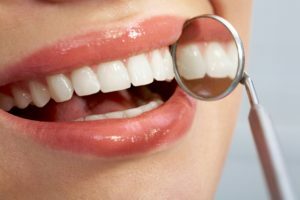 Almost every one of us dreams of an immaculate snow-white smile. Modern medical technologies in the field of dentistry, can provide a spectacular result in the shortest possible time due to the use of veneers.
Almost every one of us dreams of an immaculate snow-white smile. Modern medical technologies in the field of dentistry, can provide a spectacular result in the shortest possible time due to the use of veneers.
In most cases, restoration of teeth using sealing materials or bleaching procedures does not give an ideal result, which is especially important when it comes to the front teeth.
In such situations, modern veneers are the best option.
Contents
- Miraculous plates
- Indications for installation
- Contraindications and limitations
- Ceramic plates
- Advantages of ceramics
- How much does ceramics for teeth cost?
- Composite veneers
- Price issue
- Special features of the
- production and installation of the lamellaes The service life of different types of veneers
The miracle plates
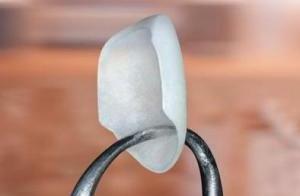 These are ceramic or composite material plates intended for substitution of the outer layer of teeth for color, shape or protection purposes.
These are ceramic or composite material plates intended for substitution of the outer layer of teeth for color, shape or protection purposes.
Unlike a crown that completely covers the tooth, the veneers cover one or two surfaces.
The tooth-coated tooth is not only restored externally, but also acquires additional strength. Due to the possibility of making veneers of the required shape and color, it is impossible to visually distinguish such a tooth from the others.
Indications for the installation of
Veneers are recommended to be installed to eliminate a number of defects in color and surface of the teeth, namely:
- chips and irregularities;
- wedge-shaped defect;
- differing in color of old seals;
- color changes;
- abnormal abrasion;
- consequences of injuries or disorders resulting from root canal treatment.
Also, dental patches are shown to correct bite errors such as crowding of teeth or the presence of small diastems between them.
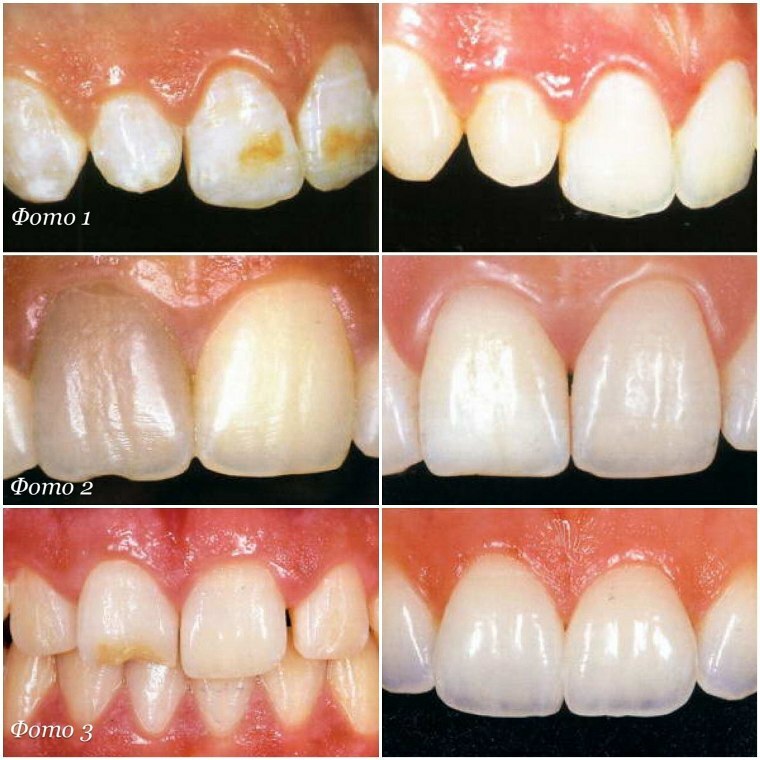
On the teeth before and after installation of veneers
Contraindications and limitations
Plates should not be placed on the front teeth with:
- incorrect bite( direct or reverse);
- lack of chewing teeth( sixes and sevens);
- ineradicable bad habits in the form of biting nails and threads;
- bruxism( nocturnal gnashing of teeth);
- extreme lifestyle with a high risk of injury;
- strong destruction of the inner surface of the tooth;
- presence on the inner surface of the tooth large or medium-sized seals;
- pathological abrasion of teeth above 1 degree.
If necessary, veneers and crowns made from the same material can be placed on adjacent teeth( if they are affected to varying degrees).
Ceramic plates
This type of veneers is represented by two types, each of which has its own characteristics.
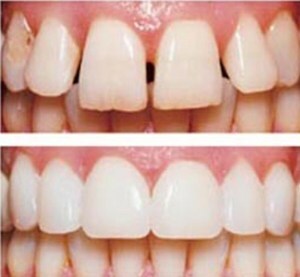
- Porcelain .Porcelain is most often used for the manufacture of dental veneers because of its durability, color fastness, and similar tooth enamel structural and transparency.
- Zirconia .For their production, a high-strength zirconia frame is used, on which the porcelain mass is cured. For strength this kind is not inferior to pressed porcelain.
Advantages of ceramics
The advantages of such veneers for teeth are due to the properties of ceramics and manufacturing features.
When choosing a ceramic cover, you can not doubt its aesthetics, color stability, reliability and long service life with a lean relation to the teeth.
How much does ceramics for teeth cost?
High cost is the only disadvantage of ceramic veneers. Made of porcelain pads will cost an average of 16 thousand rubles, a zirconium analog will cost at least 3 thousand more.
Composite veneers
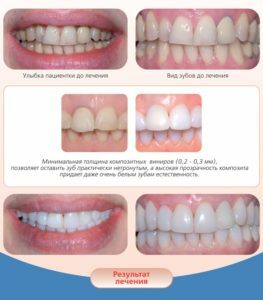 Veneers made of composite materials can be manufactured both in the laboratory and directly in the patient's mouth.
Veneers made of composite materials can be manufactured both in the laboratory and directly in the patient's mouth.
This type is less popular than ceramic analogues due to a number of negative aspects associated with aesthetics and reliability.
Typical shortcomings:
- color change over time and the need for replacement;
- complexity of tone selection;
- high brittleness and low reliability due to design features and influence in the manufacturing process of the human factor.
Price issue
If the process of making the veneer occurs directly in the patient's mouth, the cost does not exceed the price for traditional restoration of the tooth, amounting to about 5 thousand rubles.
When selecting a laboratory version of manufacturing, you should count on a larger amount( about 14 thousand) because of significant labor costs.
Thus, the price is a plus, and the quality and aesthetics are minus the composite overlays on the teeth.
Features of the manufacture and installation of
plates Vinyl scintillation involves several stages:
- Preparation of .On the scale of shades and colors, the desired tone of the lining is selected, after which the doctor proceeds to the preparation of the tooth, polishing off from its front surface 0.5 - 1.5 mm of hard tissues. After preparation, the tooth is covered with a temporary plastic veneer to exclude the destructive effect of the aggressive environment of the oral cavity.
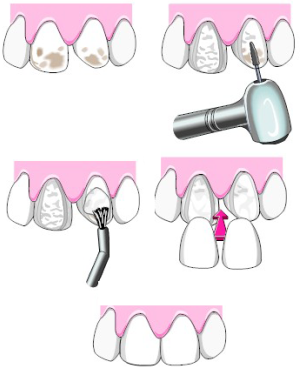
- Molding and subsequent fabrication. When choosing a zirconia veneer as a material, a future patch on the teeth is modeled on the captured three-dimensional impression on the computer, after which the information is transferred to the automatic veneer grinding machine, in which the workpiece is installed. Porcelain veneers are made using the exact gypsum models created in the dental laboratory. On the models obtained, veneers are formed by injection molding( under the influence of high temperature and pressure, pressed ceramics are obtained), or porcelain mass is laminated layer by layer, followed by roasting( forming of unpressed ceramics).Composite veneers made in the laboratory, too, are formed by gypsum print from light-cured filling material.
- Fixation of .The procedure is carried out using a composite adhesive intended for this purpose.
- Installation of composite veneers in the patient's mouth .The material of the composite lining is a light-cured polymer seal. The so-called therapeutic veneer is formed by the doctor immediately after the tooth surface is ground. For this, the filling material is laminated layer by layer.
 Other ways to correct the teeth of the smile line you learn from this article.
Other ways to correct the teeth of the smile line you learn from this article. The process of manufacturing and installing veneers on the front teeth:
The service life of different types of veneers
Despite the fineness, ceramic veneers are sufficiently resistant to chemicals, the environment, food. The teeth covered with a strong lining receive reliable protection against destruction, which, with proper care and regular visits to the dentist, will last at least 10 years. The service life can be reduced only because of sports or other injuries, the regular use of seeds, the ingestion of pellets in food.
